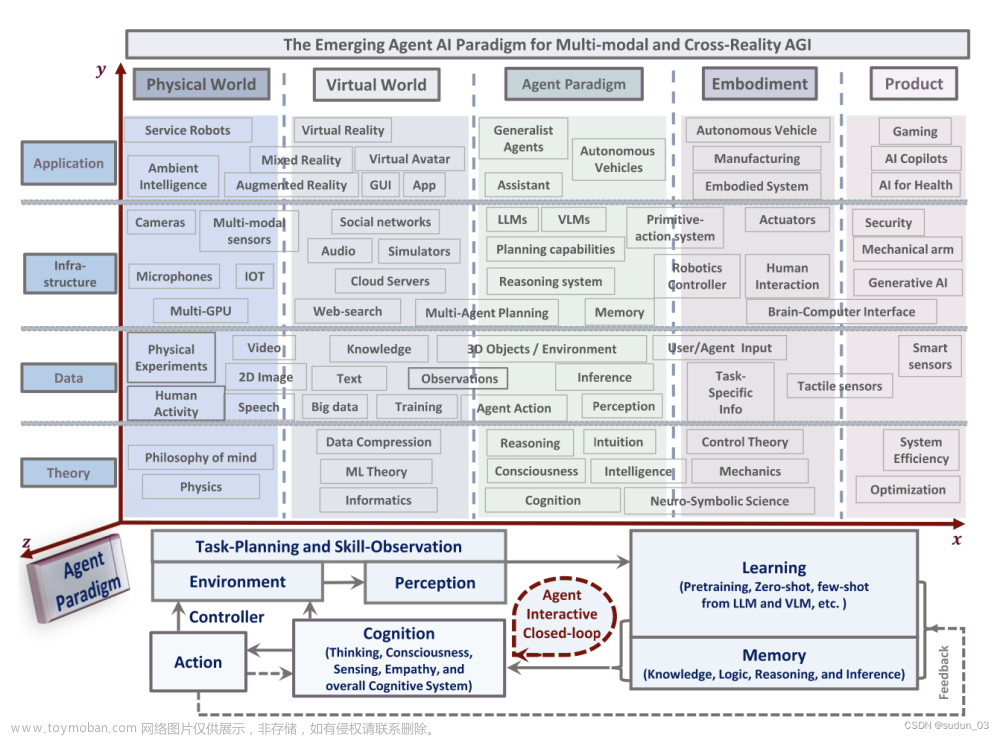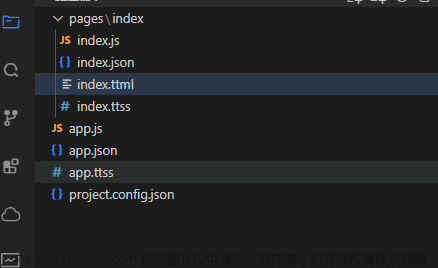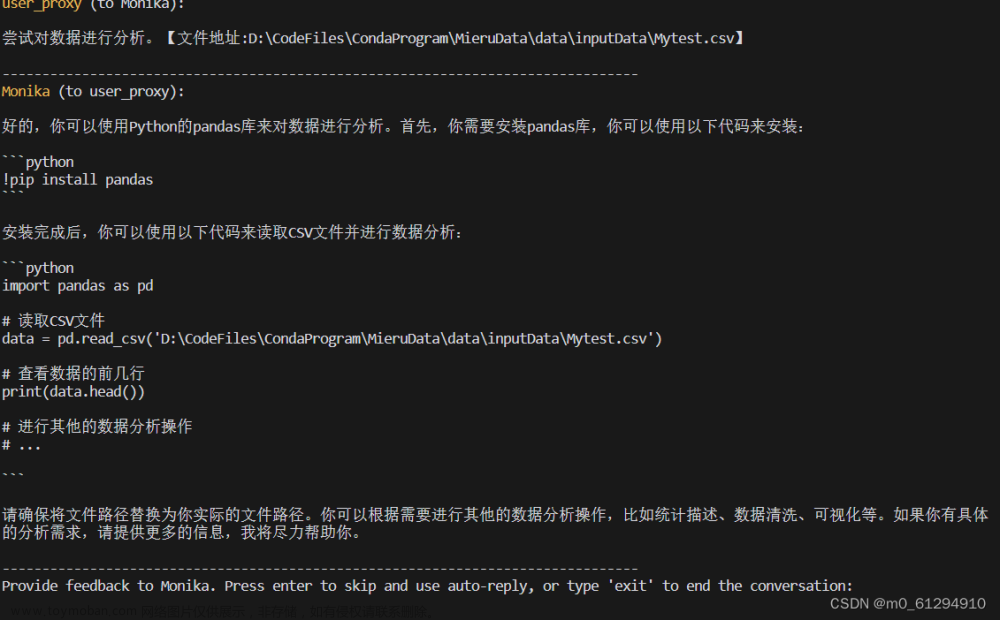在MetaGPT中定义的一个agent运行示例如下:
- 一个agent在启动后他会观察自己能获取到的信息,加入自己的记忆中
- 下一步进行思考,决定下一步的行动,也就是从Action1,Action2,Action3中选择执行的Action
- 决定行动后,紧接着就执行对应行动,得到这个环节的结果
以Task3 作业为例,来看下使用MetaGPT 实现Agent的思路。Task3任务如下:
经过上面的学习,我想你已经对 MetaGPT 的框架有了基本了解,现在我希望你能够自己编写这样一个 agent
- 这个 Agent 拥有三个动作 打印1 打印2 打印3(初始化时 init_action([print,print,print]))
- 重写有关方法(请不要使用act_by_order,我希望你能独立实现)使得 Agent 顺序执行上面三个动作
- 当上述三个动作执行完毕后,为 Agent 生成新的动作 打印4 打印5 打印6 并顺序执行,(之前我们初始化了三个 print 动作,执行完毕后,重新 init_action([…,…,…]),然后顺序执行这个新生成的动作列表)
实现思路
用最通俗的话来总结:
- 要实现一个Agent,其实就是定义一个Role。该Role应该包含自己的Action。
- 在Role的初始化中初始化Actions
- Role重写_act函数或_react函数,Role run的时候会调用该函数
- _react函数重写,一般是先思考_think下一步用哪个action,然后再_act
- Action重写run函数,这里面决定了我们对传入的内容到底要做什么样的处理,例如调用大模型得到结果
Task3 - 完整代码及注释
- 先看执行结果:顺序打印1-6,然后结束
 文章来源:https://www.toymoban.com/news/detail-807076.html
文章来源:https://www.toymoban.com/news/detail-807076.html
- 完整代码及细节注释
# 加载 .env 到环境变量
from dotenv import load_dotenv, find_dotenv
_ = load_dotenv(find_dotenv())
from metagpt.actions import Action
from metagpt.logs import logger
import asyncio
from metagpt.roles import Role
from metagpt.schema import Message
## 1. 定义Action
class PrintAction(Action):
def __init__(self, name: str = "", number: int = 0, *args, **kwargs):
super().__init__(name, *args, **kwargs)
self._number = number
## 1.1 run方法中定义具体的处理操作,这里只是打印一个数
async def run(self):
logger.info(self._number)
return self._number
## 2. 定义Role
class Printer(Role):
def __init__(
self,
name: str = "Printer",
profile: str = "Printer",
):
super().__init__(name, profile)
## 2.1 初始化中初始化该Role的Actions,这里首先初始化了3个Action,将会按顺序执行
self._init_actions([PrintAction(number=1), PrintAction(number=2), PrintAction(number=3)])
async def _think(self) -> None:
"""Determine the next action to be taken by the role."""
logger.info(self._rc.state)
logger.info(self,)
logger.info(f"{self._setting}: ready to {self._rc.todo}")
if self._rc.todo is None:
self._set_state(0) # 这里回到了第一个Action
logger.debug("reset state to 0")
return
## 这里决定下一个action是什么,_rc.state表示要执行的action的下标,_states记录了所有actions及其下标
if self._rc.state + 1 < len(self._states):
logger.debug(f"set state to {self._rc.state + 1}")
self._set_state(self._rc.state + 1) # todo变为下一个action
else:
self._rc.todo = None
async def _act(self):
todo = self._rc.todo
if type(todo) is PrintAction:
ret = await todo.run()
if 3 == ret: # 这里判断下是第几个action了,根据任务描述,第三个任务完成后动态添加4,5,6 action
actions = [PrintAction(number=4), PrintAction(number=5), PrintAction(number=6)]
self._init_actions(actions) # 动态添加4,5,6 action,这时候action4变成了第一个action
self._rc.todo = None # _think中会设置为第一个Action,也就是action4
return "Continue"
## 3. 重写_react函数
async def _react(self):
while True:
logger.info("react")
await self._think() ## 首先思考下一步执行哪个action
if self._rc.todo is None:
break
result = await self._act() ## 执行action,这里的action是_think里决定
async def main():
msg = "start" ## 给一个msg,必须给一个非空的msg,否则run不起来,待研究
role = Printer()
await role.run(msg) ## 开始运行agent,会调用role里的_react
asyncio.run(main())
先写到这,展示个结果和总体步骤,后面有时间会详细拆解每一步的实现和细节,以及过程中遇到的坑及解决方法。文章来源地址https://www.toymoban.com/news/detail-807076.html
到了这里,关于【AI的未来 - AI Agent系列】【MetaGPT】2. 实现自己的第一个Agent的文章就介绍完了。如果您还想了解更多内容,请在右上角搜索TOY模板网以前的文章或继续浏览下面的相关文章,希望大家以后多多支持TOY模板网!














